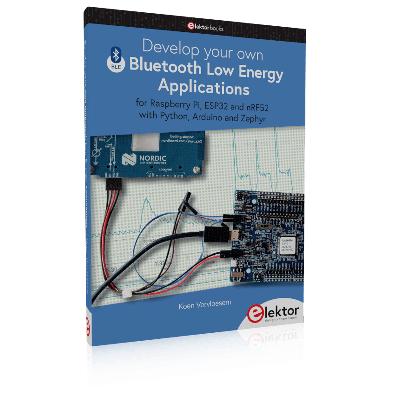Develop your own Bluetooth Low Energy Applications for Raspberry Pi, ESP32 and nRF52 with Python, Arduino and Zephyr
Bluetooth Low Energy (BLE) radio chips are ubiquitous from Raspberry Pi to lightbulbs. BLE is an elaborate technology with a comprehensive specification, but the basics are quite accessible.
A progressive and systematic approach will lead you far in mastering this wireless communication technique, which is essential for working in low power scenarios.
In this book, you’ll learn how to:
discover BLE devices in the neighborhood by listening to their advertisements
create your own BLE devices advertising data
connect to BLE devices such as heart rate monitors and proximity reporters
create secure connections to BLE devices with encryption and authentication
understand BLE service and profile specifications and implement them
reverse engineer a BLE device with a proprietary implementation and control it with your own software
make your BLE devices use as little power as possible
This book shows you the ropes of BLE programming with Python and the Bleak library on a Raspberry Pi or PC, with C++ and NimBLE-Arduino on Espressif's ESP32 development boards, and with C on one of the development boards supported by the Zephyr real-time operating system, such as Nordic Semiconductor's nRF52 boards.
Starting with a very little amount of theory, you'll develop code right from the beginning. After you've completed this book, you'll know enough to create your own BLE applications.
Title |
Develop your own Bluetooth Low Energy Applications for Raspberry Pi, ESP32 and nRF52 with Python, Arduino and Zephyr |
Author |
Koen Vervloesem |
Publication date |
2022-06-08 |
Number of pages |
258 |
Price |
€ 34.95 |
ISBN-13 |
978-3-89576-500-1 |
Publisher |
Elektor International Media (EIM) |
You can order the book in the Elektor Store or in your favourite book store.
The code examples from the book are available in the corresponding GitHub repository and are released under the open-source MIT license. You can also find the errata list there and a list of additional tips and interesting projects not mentioned in the book.
